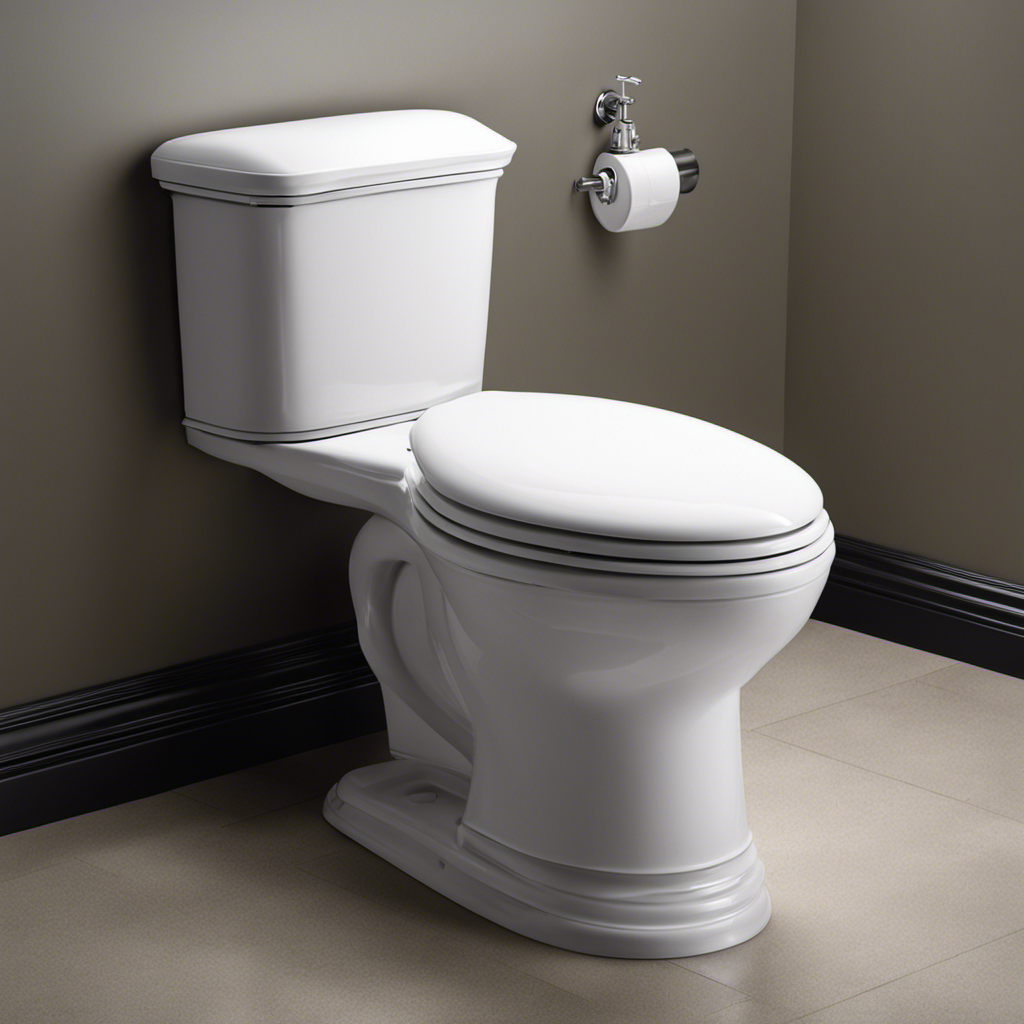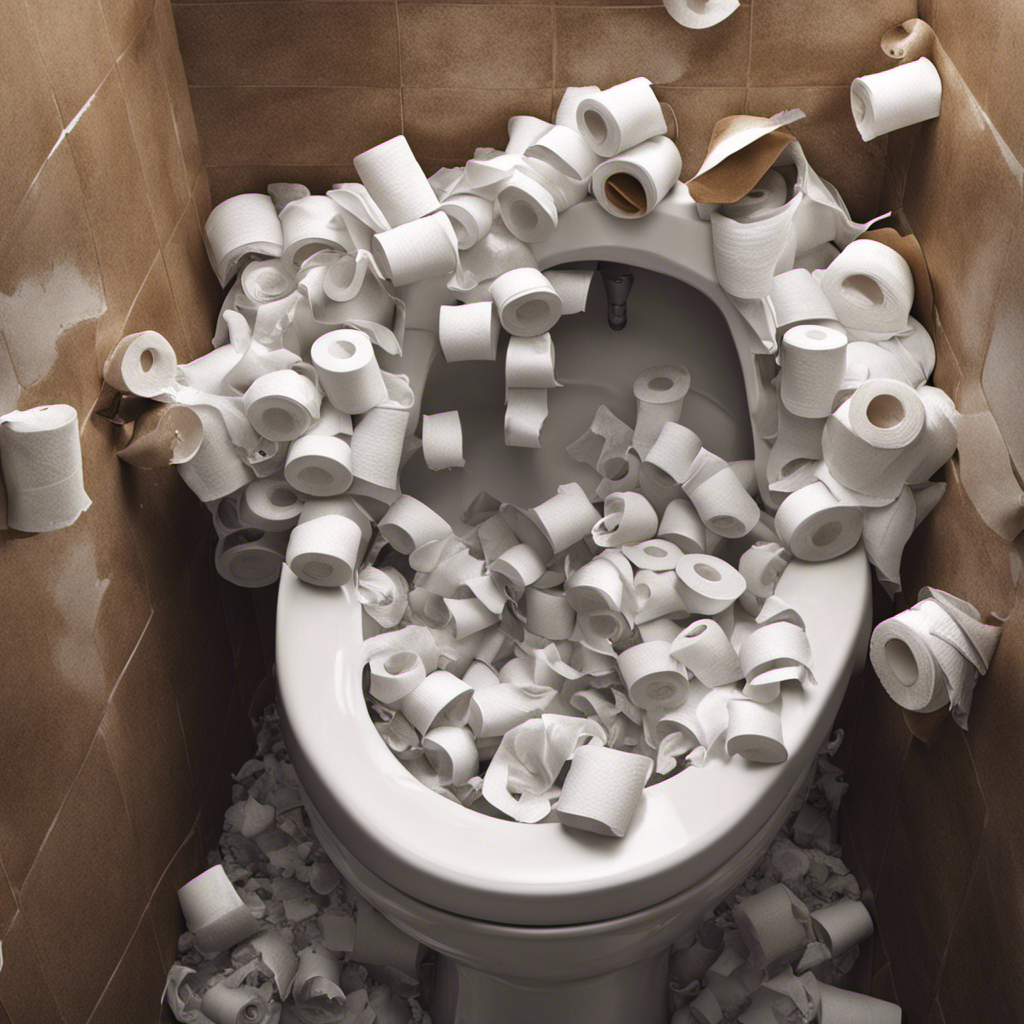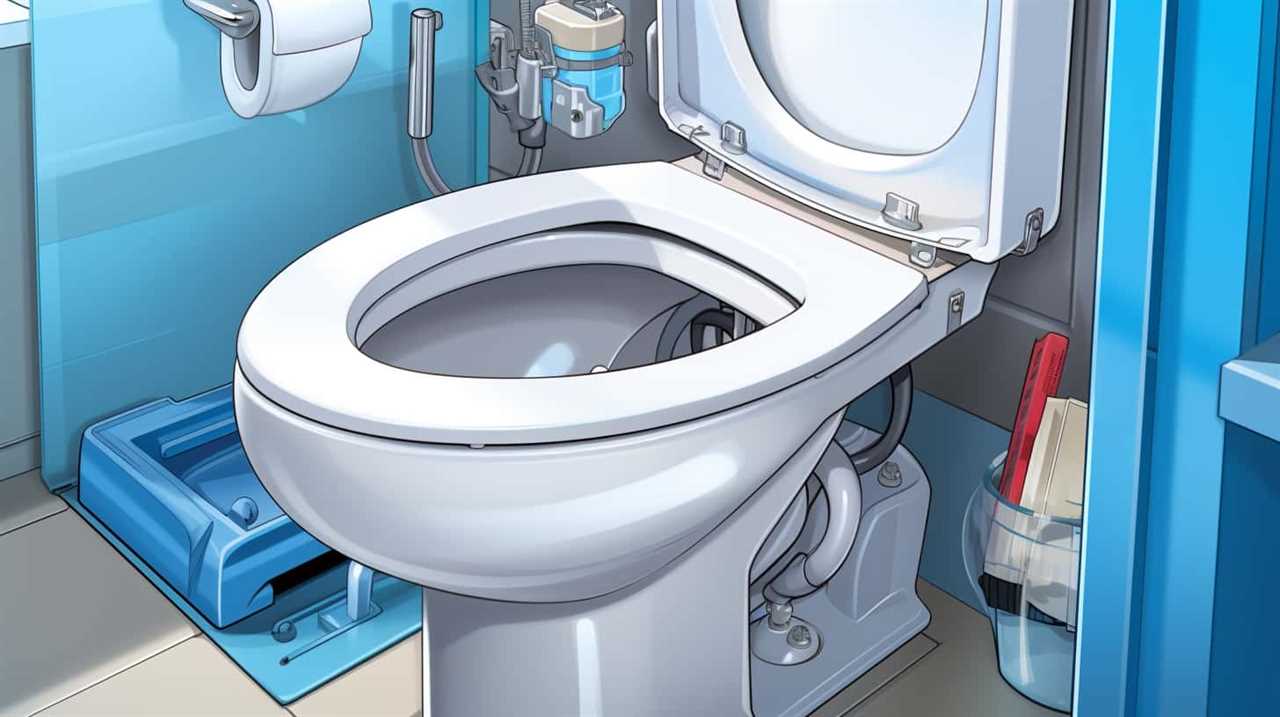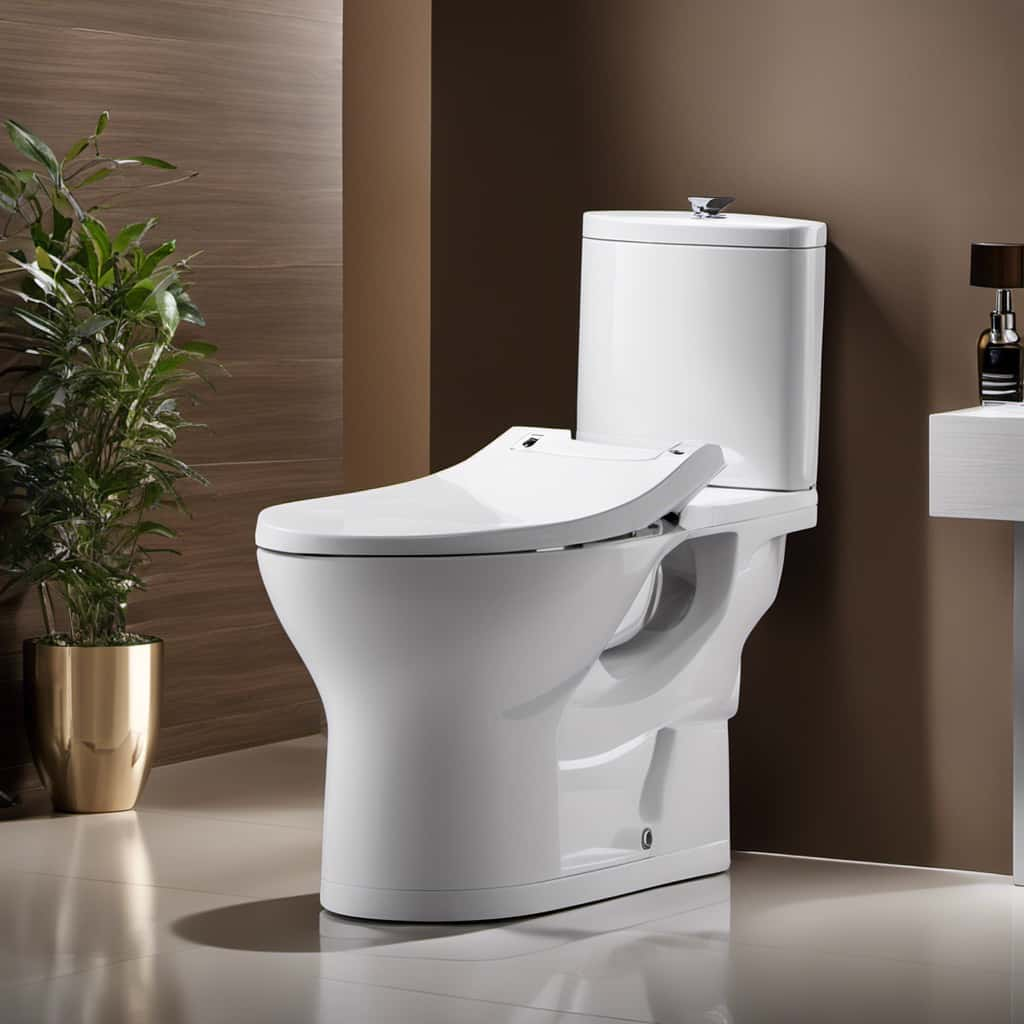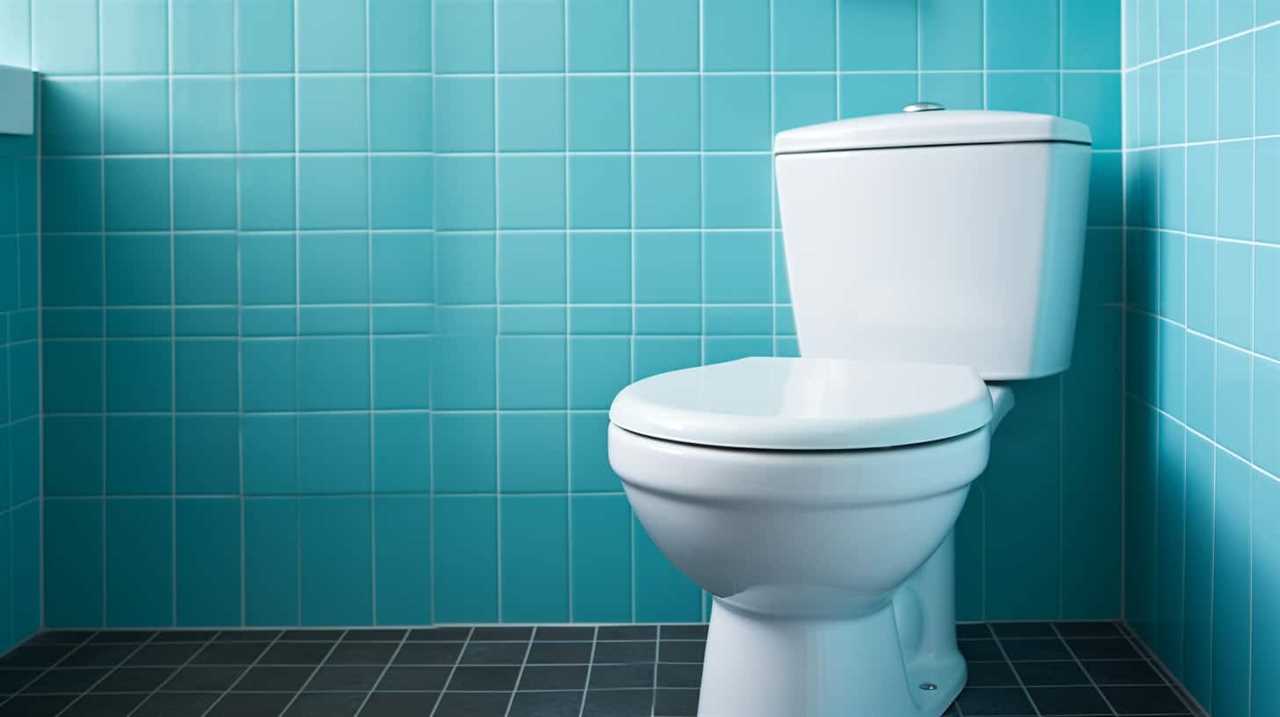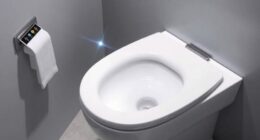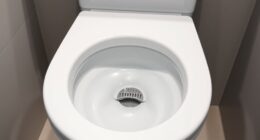I can’t help but cringe every time I flush my toilet and it fails to do its job properly. It’s as if the water just lazily swirls around, leaving behind remnants that should have been whisked away.
It’s a frustrating problem that many of us have experienced: a toilet that doesn’t flush all the way. In this article, I will delve into the common causes behind this issue, explain the mechanics of a toilet’s water flow, and provide troubleshooting tips and solutions to improve flushing power.
So let’s dive in and tackle this pesky problem once and for all.
Key Takeaways
- Insufficient water in the tank, malfunctioning flapper or flush valve, low water level in the tank, and damaged or worn out flapper or flush valve are common causes of incomplete flushing.
- The fill valve controls the water level, the flush valve releases water during flushing, and the flush handle lifts the flush valve. The siphoning effect carries away waste, but low water pressure can result in a weak flush.
- To troubleshoot a weak flush, you should check the water pressure, adjust the fill valve if necessary, use a plunger or toilet auger for a clogged drain, inspect the flapper and adjust the chain for a running toilet, and inspect the wax ring and tighten connections for a leaking toilet.
- Solutions for improving flushing power include adjusting the fill valve to increase the water level, upgrading to a modern toilet with improved flushing technology, regular toilet maintenance, considering upgrading fixtures if necessary, and understanding that optimal performance requires proper maintenance.
Common Causes of Incomplete Flushing
One common cause of incomplete flushing could be that you don’t have enough water in the tank. When the toilet’s water level is low, the flushing power is reduced, resulting in toilet clogs and the inability to flush properly.
Another possible cause is a flushing mechanism malfunction. If the flapper or flush valve is not working correctly, it can prevent a sufficient amount of water from entering the bowl during the flush, leading to incomplete flushing.
To fix this issue, you can adjust the water level in the tank by adjusting the float or refill valve. Additionally, you may need to clean or replace the flapper or flush valve if they are damaged or worn out.
Understanding the toilet’s water flow is crucial in troubleshooting and resolving incomplete flushing problems.
Understanding the Toilet’s Water Flow
To understand the toilet’s water flow, it’s important to know how the flush mechanism works.
Inside the toilet tank, there is a fill valve that controls the water level and a flush valve that releases the water during flushing.
When the flush handle is pushed, it lifts the flush valve, allowing water to rush from the tank into the bowl.
The force of the water creates a siphoning effect that carries away the waste.
However, if the water pressure is low, the flush may not be strong enough to clear the bowl completely.
This can happen if the fill valve is not adjusted properly or if there is a problem with the water supply.
In such cases, it is advisable to check the water pressure and make necessary adjustments to ensure a proper flush.
How to Troubleshoot a Weak Flush
You can troubleshoot a weak flush by checking the water pressure and adjusting the fill valve if necessary. To understand how to troubleshoot a weak flush, it’s important to know some common toilet malfunctions and basic toilet maintenance tips. Here is a table that outlines these common issues and their possible solutions:
| Common Toilet Malfunctions | Possible Solutions |
|---|---|
| Weak flush | Check water pressure and adjust fill valve if necessary |
| Clogged drain | Use a plunger or a toilet auger to clear the blockage |
| Running toilet | Check the flapper and adjust the chain if needed |
| Leaking toilet | Inspect the wax ring and tighten any loose connections |
Solutions for Improving Flushing Power
Improving flushing power can be achieved by adjusting the fill valve and checking the water pressure.
Proper maintenance of your toilet is essential to ensure optimal performance. One way to improve flushing power is by adjusting the fill valve, which controls the water level in the tank. If the water level is too low, it may not provide enough force to flush effectively. By adjusting the fill valve, you can increase the water level, resulting in a stronger flush.
Another solution is to upgrade your toilet fixtures. Older toilets may have outdated designs that limit flushing power. Upgrading to a more modern toilet with improved flushing technology can significantly enhance flushing power and efficiency.
Don’t underestimate the importance of regular toilet maintenance and consider upgrading your fixtures if necessary.
When to Call a Plumber for Toilet Flushing Issues
If your toilet is consistently struggling to flush properly, it might be time to consider calling a plumber. Ignoring the issue can lead to bigger problems down the line, such as a complete blockage or even sewage backup.
Here are three signs that indicate you may have a clogged sewer line:
-
Slow draining: If the water in your toilet takes a long time to drain, it could be a sign of a clog in the sewer line. This can cause the water level to rise and the flush to be weak.
-
Gurgling sounds: If you hear gurgling sounds coming from your toilet or other drains when you flush, it could mean that air is trapped in the sewer line due to a clog.
-
Foul odors: A persistent foul smell coming from your toilet or drains can indicate a clogged sewer line. This is caused by trapped sewage that cannot properly flow out.
Regular toilet maintenance is essential to prevent clogs and ensure proper flushing. This includes avoiding flushing non-flushable items, using a plunger when necessary, and scheduling periodic inspections by a professional plumber. Taking these steps can help prevent costly repairs and keep your toilet functioning properly.
Conclusion
In conclusion, ensuring that your toilet flushes properly is crucial for maintaining a functional bathroom. By understanding the common causes of incomplete flushing and how the toilet’s water flow works, you can troubleshoot and improve the flushing power on your own.
However, if all attempts fail, it is wise to call a plumber to address the issue before it becomes a bigger problem. Remember, a toilet that doesn’t flush properly is like a car with a sputtering engine – it may still work, but it’s not performing at its best.
Don’t settle for subpar flushing; take steps to fix it and enjoy a fully functional toilet once again.
